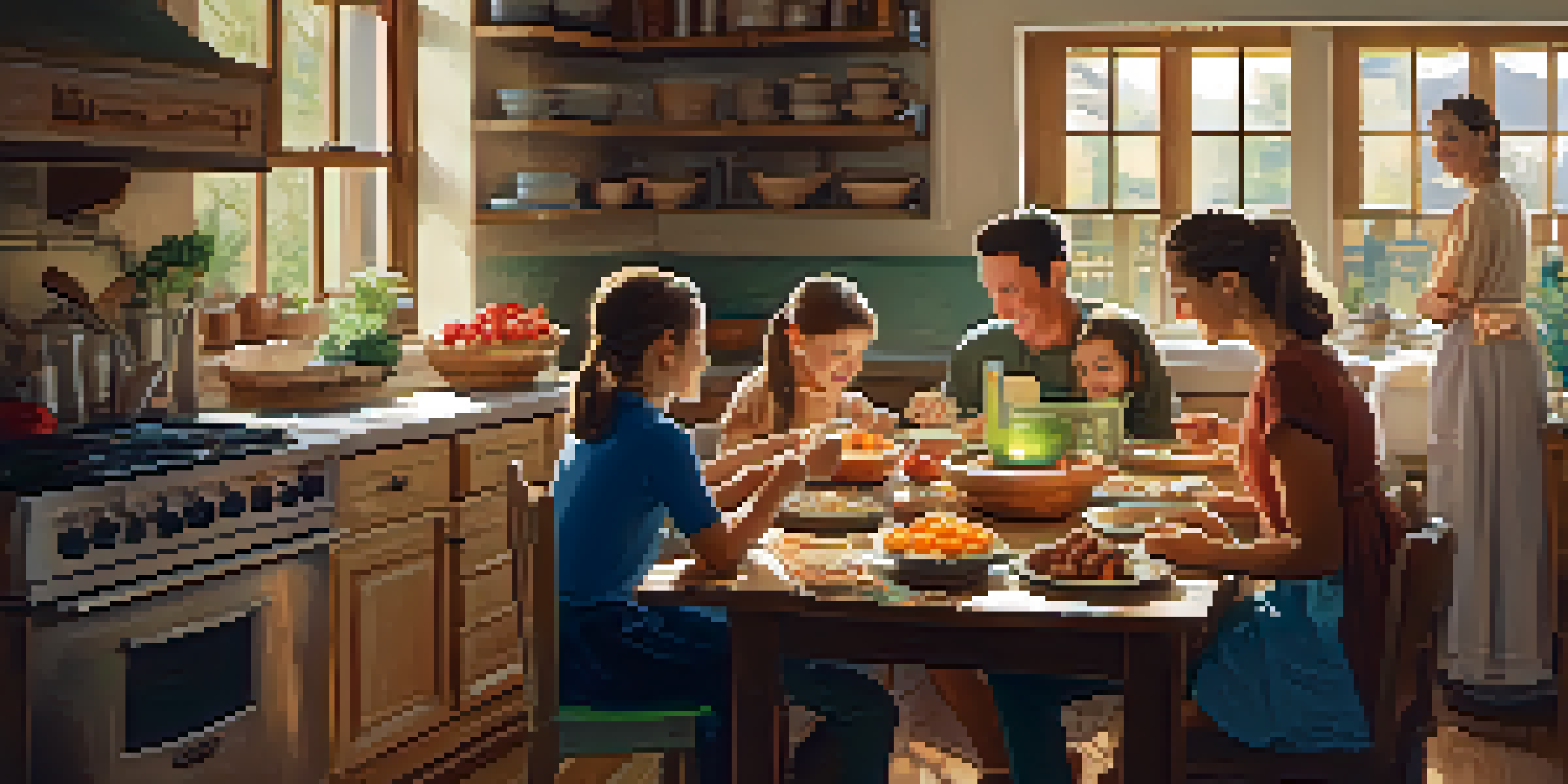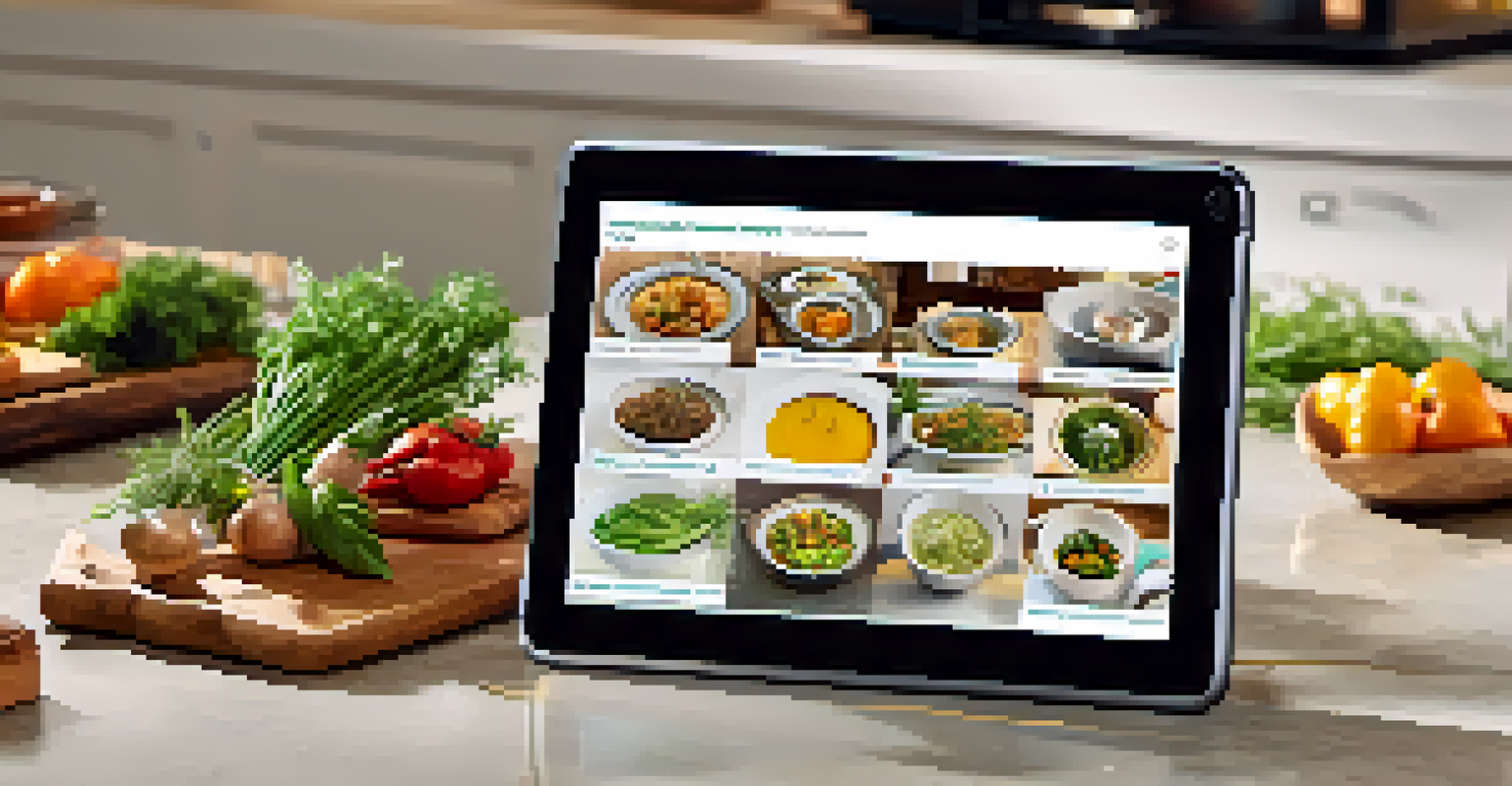How to Document Traditional Recipes for Future Generations

Understanding the Importance of Traditional Recipes
Traditional recipes are more than just instructions; they are a connection to our heritage. They tell stories of family gatherings, cultural celebrations, and the love that goes into each dish. By documenting these recipes, we ensure that our culinary history remains alive for future generations.
Cooking is like love. It should be entered into with abandon or not at all.
Think of these recipes as family heirlooms, much like a treasured photograph or a beloved piece of jewelry. They carry the flavors and traditions that shape our identities. Preserving them allows us to pass down not just the food, but the memories and stories that accompany each meal.
In a world where fast food and convenience often overshadow home cooking, documenting traditional recipes helps keep our culinary traditions vibrant and relevant. It’s a way to honor our ancestors and share that rich history with those who come after us.
Gathering Family Contributions for Recipe Documentation
One of the most enjoyable parts of documenting traditional recipes is gathering contributions from family members. Invite them to share their favorite recipes, including those dishes that evoke cherished memories. This collaborative approach not only enriches your collection but also strengthens family bonds.

Consider hosting a family cooking day where everyone brings a dish to prepare together. As you cook, take notes on techniques and ingredients, and encourage family members to share stories about why each recipe is special. This can lead to delightful conversations that add depth to your documentation.
Preserving Culinary Heritage Matters
Documenting traditional recipes helps maintain a connection to our cultural heritage and family stories.
Don’t forget to include the variations that different family members might have. Each cook may have their own twist on a recipe, and capturing those nuances can provide a fuller picture of your family's culinary heritage.
Choosing the Right Format for Documenting Recipes
When it comes to documenting recipes, the format you choose can greatly impact how future generations will use them. You can opt for a handwritten recipe book, which adds a personal touch and can be passed down through the family. Alternatively, digital formats like blogs or recipe apps can make sharing easier and more accessible.
The fondest memories are made gathered around the table.
If you prefer a physical book, consider incorporating photographs, illustrations, or even anecdotes alongside the recipes. This not only makes the book visually appealing but also provides context that enhances the cooking experience. A digital format, on the other hand, allows for easy updates and sharing with a wider audience.
Whichever format you choose, make sure it is user-friendly and easy to navigate. Including a table of contents or an index can help future cooks find their favorite recipes quickly, ensuring that these treasured dishes remain a part of family gatherings for years to come.
Capturing the Story Behind Each Recipe
Every recipe has a story, and capturing these narratives can make your documentation even more meaningful. Ask family members to share why a particular dish is significant to them, whether it was a staple during holidays or a comfort food during tough times. These stories add a layer of richness that mere ingredients cannot convey.
For example, a simple chocolate cake might not just be a dessert; it could be the cake your grandmother made every birthday, filled with love and laughter. By documenting these stories alongside the recipes, you create a connection that transcends generations.
Engage Family in Recipe Creation
Involving family members in the recipe documentation process strengthens bonds and enriches the collection.
Consider including anecdotes about the first time someone made the dish or any funny mishaps that occurred in the kitchen. These personal touches will make the recipes come alive and encourage future cooks to feel a sense of belonging and connection to their heritage.
Incorporating Photos and Visuals in Recipe Documentation
Visuals play a crucial role in recipe documentation, as they provide a snapshot of what the finished dish should look like. High-quality photographs can inspire future generations to try their hand at these beloved recipes. Consider including step-by-step images to guide them through the cooking process.
You can also add images of family gatherings where these dishes were served, as this helps to contextualize the recipes within the family’s story. Pictures of smiling faces around the dinner table can evoke warm memories and encourage future cooks to create their own.
If you're documenting digitally, think about incorporating videos or even QR codes that link to video tutorials. This modern approach keeps the documentation relevant and engaging for tech-savvy family members while maintaining the essence of traditional cooking.
Sharing and Distributing Documented Recipes
Once you've compiled your traditional recipes, it’s time to share them with family and friends. Consider creating copies of your recipe book or sending out digital files to ensure everyone has access. This sharing fosters a sense of community and encourages others to embrace your family’s culinary traditions.
You could also host a family gathering where you share the documented recipes and cook some of the dishes together. This creates an opportunity for everyone to bond over the food and learn from each other’s cooking techniques.
Evolve Recipes for Future Generations
Encouraging adaptations of traditional recipes ensures they remain relevant and enjoyable for everyone.
If you're inclined, consider creating a family blog or social media page dedicated to sharing these recipes more widely. This not only keeps the tradition alive but can also inspire others to document their own family recipes.
Continuously Updating and Evolving Recipes
Documenting traditional recipes isn't a one-time task; it's an ongoing process. As families grow and evolve, so do their culinary preferences and traditions. Encourage future generations to adapt and modify recipes to fit their tastes, while still honoring the original version.
For instance, if a recipe calls for an ingredient that’s hard to find or no longer resonates with modern diets, it’s perfectly acceptable to suggest alternatives. This flexibility ensures that the recipes remain relevant and can be enjoyed by everyone, regardless of dietary restrictions.

Encourage family members to add their own notes or variations directly in the recipe documentation. This collaborative spirit allows the recipes to evolve over time while still preserving their original essence, creating a living document of your family’s culinary journey.
The Legacy of Documenting Traditional Recipes
Ultimately, documenting traditional recipes is about creating a legacy that transcends generations. It's a gift that you can give to your family, allowing them to connect with the past while creating new memories in the kitchen. Each recipe serves as a bridge between generations, fostering a sense of continuity and belonging.
By taking the time to document these cherished recipes, you are ensuring that the flavors and stories that shaped your family will not be forgotten. It’s an investment in your family’s future and a way to keep those traditions alive.
So, gather your loved ones, start cooking, and let the stories flow. Together, you can create a beautiful collection of recipes that will be treasured for generations to come.